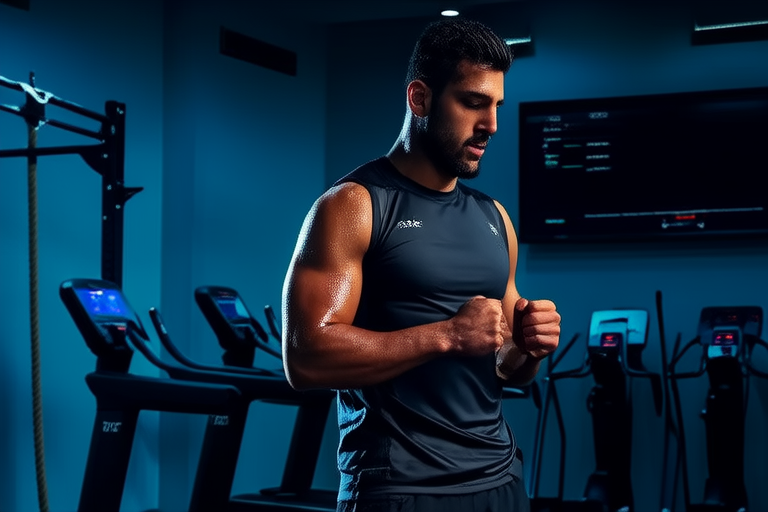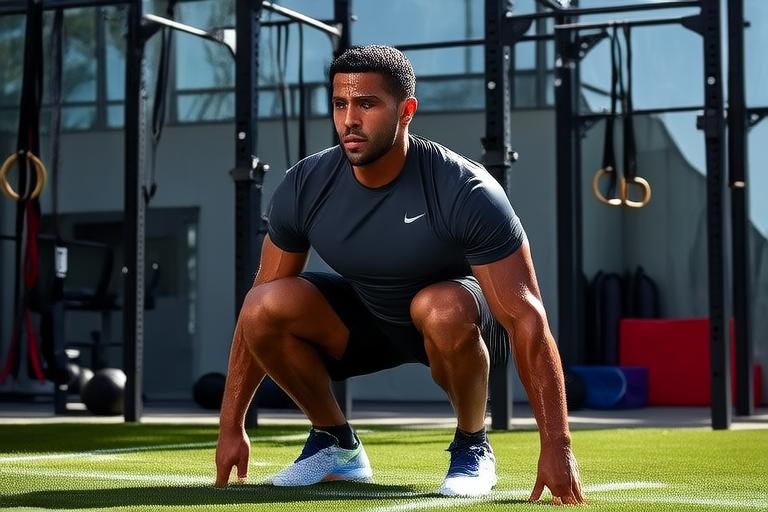Boosting Performance: Key Insights from Sports Science and Essential Precautions
Introduction to Performance Enhancement in Sports
In the world of competitive sports, the pursuit of peak performance is relentless. Athletes are constantly seeking ways to improve their physical capabilities, endurance, and overall prowess. The integration of scientific insights has become crucial in this endeavor, offering a structured approach to training and recovery that can significantly enhance an athlete’s performance.
The importance of integrating scientific insights cannot be overstated. Historically, athletes relied on intuition and experience to guide their training regimens. However, advancements in sports science have provided a deeper understanding of the human body’s physiological responses to various forms of exercise, diet, and mental preparation. This knowledge allows coaches and athletes to tailor training programs more effectively, ensuring that every aspect of performance is optimized.
Moreover, the application of scientific principles helps in mitigating risks associated with overtraining and injuries. By adhering to evidence-based practices, athletes can achieve their full potential while safeguarding their long-term health. Thus, the fusion of cutting-edge research with traditional athletic wisdom represents the future of competitive sports.
Key Insights from Sports Science
Nutrition
Athletic performance heavily depends on proper nutrition. A balanced diet rich in carbohydrates, proteins, fats, vitamins, and minerals provides the necessary fuel for intense workouts and competitions. Carbohydrates are particularly important as they serve as the primary source of energy during high-intensity activities. Consuming complex carbohydrates like whole grains, fruits, and vegetables ensures sustained energy levels throughout training sessions.
Proteins play a vital role in muscle repair and growth. Athletes need sufficient protein intake to recover from strenuous exercises and build lean muscle mass. Lean meats, fish, eggs, dairy products, legumes, and nuts are excellent sources of high-quality proteins. Additionally, fats contribute to hormone production and energy storage. Healthy fats found in avocados, olive oil, and fatty fish support overall health and enhance performance.
Vitamins and minerals also have significant impacts on athletic performance. For instance, iron deficiency can lead to fatigue and decreased stamina, whereas calcium and vitamin D are essential for bone health and preventing stress fractures. Antioxidants such as vitamin C and E help reduce oxidative stress caused by intense physical activity, thereby promoting faster recovery.
Exercise Physiology
Understanding exercise physiology is fundamental to optimizing training programs. One key concept is periodization, which involves dividing training into distinct phases focusing on different aspects of fitness—such as strength, power, speed, and endurance—at various times throughout the year. Periodization helps prevent plateaus and keeps athletes motivated by introducing variety into their routines.
Another critical area within exercise physiology is cardiovascular conditioning. Regular aerobic exercises increase heart rate and lung capacity, improving oxygen delivery to muscles during prolonged efforts. Interval training, where short bursts of high-intensity work alternate with periods of rest or lower intensity, enhances both anaerobic and aerobic capacities simultaneously.
Strength training remains indispensable for most sports disciplines. It improves muscular strength, power output, and joint stability, reducing the risk of injuries. Incorporating resistance exercises targeting major muscle groups along with core stability movements ensures全面发展,同时减少受伤的风险。结合针对主要肌肉群的力量训练与核心稳定性运动,确保运动员的全面发展,同时减少受伤的风险。
Recovery Techniques
Effective recovery strategies are just as important as rigorous training. Active recovery, involving low-intensity activities like walking or swimming, promotes blood circulation, removes metabolic waste products, and speeds up muscle repair processes. Contrast showers, alternating between hot and cold water, stimulate blood flow and reduce muscle soreness post-exercise.
Massage therapy has been shown to alleviate muscle tension, improve flexibility, and enhance relaxation. Foam rolling and self-myofascial release techniques are practical alternatives when professional massages are unavailable. Sleep quality directly affects recovery; adequate sleep allows the body to restore itself fully after demanding workouts.
Hydration is another critical factor in recovery. Dehydration impairs cognitive function, decreases endurance, and increases the likelihood of heat-related illnesses. Drinking enough water before, during, and after exercise maintains fluid balance and supports bodily functions.
Mental Preparation
Mental toughness is often cited as one of the most significant determinants of success in sports. Techniques such as visualization, where athletes imagine themselves successfully completing specific tasks or overcoming challenges, help build confidence and focus. Mindfulness practices encourage present-moment awareness, reducing anxiety and enhancing concentration.
Goal setting provides direction and motivation for athletes. Setting realistic yet challenging goals encourages continuous improvement and personal growth. Positive reinforcement through self-talk and encouragement from coaches fosters resilience and perseverance under pressure situations.
Finally, managing stress through relaxation techniques like deep breathing exercises, meditation, or yoga contributes positively to overall well-being and performance levels. These practices promote emotional regulation and better coping mechanisms when faced with adversity.
Essential Precautions for Athletes
Injury Prevention
Preventing injuries should always be a priority for athletes. Proper warm-up routines prepare muscles and joints for upcoming activities, reducing the chances of strains or sprains. Cool-down periods allow the body to gradually return to its resting state, facilitating recovery.
Wearing appropriate protective gear tailored to individual sports minimizes injury risks. For example, helmets protect against head trauma in contact sports, while knee pads offer additional support during activities requiring frequent changes in direction.
Gradual progression in training intensity and volume prevents overuse injuries. Pushing too hard too quickly can lead to chronic conditions such as tendinitis or stress fractures. Listening to one’s body and adjusting training plans accordingly ensures sustainable development without compromising health.
Proper Training Methods
Selecting suitable training methods based on individual needs and goals maximizes benefits while minimizing adverse effects. Different sports require varying combinations of skills, so personalized approaches are essential. For instance, swimmers focus on developing efficient stroke techniques alongside building cardiovascular endurance, whereas sprinters emphasize explosive power generation and rapid acceleration.
Consistency in training is equally important. Establishing regular practice schedules promotes discipline and builds momentum towards achieving desired outcomes. Varying the types of exercises performed within each session adds novelty and stimulates continued progress.
Lastly, incorporating cross-training activities complements primary sports pursuits by targeting underdeveloped areas and promoting overall fitness. Activities like cycling, rowing machines, or elliptical trainers provide cardiovascular workouts while sparing primary muscle groups used extensively during specific sport practices.
Maintaining Long-Term Health
To maintain long-term health, athletes must adopt healthy lifestyle habits beyond their sporting commitments. Regular check-ups with healthcare professionals ensure early detection and management of any potential issues. Eating nutritious meals consistently throughout the day supports steady energy levels and prevents nutritional deficiencies.
Engaging in regular non-sport-related physical activities outside of competition seasons keeps bodies active and minds engaged. Low-impact exercises like yoga, Pilates, or tai chi enhance flexibility, balance, and mental clarity.
Furthermore, prioritizing rest and recovery days allows the body time to recuperate fully from intense exertions. Adequate sleep patterns coupled with strategic rest periods contribute significantly to sustaining peak physical condition over extended periods.
Conclusion
In conclusion, integrating scientific knowledge with safety measures is paramount for achieving optimal athletic performance. By leveraging insights from sports science across nutrition, exercise physiology, recovery techniques, and mental preparation, athletes can maximize their potential while minimizing risks associated with overtraining or improper methodologies.
Adopting essential precautions focused on injury prevention, proper training methods, and maintaining long-term health further safeguards well-being throughout one’s sporting career. Combining these elements creates a holistic framework supporting sustained excellence in athletics.
Ultimately, the journey toward peak performance requires dedication, commitment, and continuous learning. Embracing scientific principles alongside prudent practices ensures that athletes not only excel competitively but also enjoy fulfilling careers marked by longevity and success.










